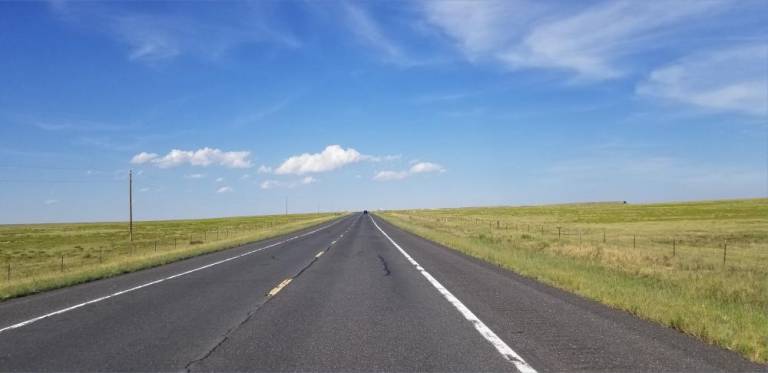The ramblin’ automaton?
The all-American road trip cannot be long for this world

When last I wrote, I had recently moved from New York City to Moab, UT. My time in the red rocks lasted nine months, not nearly long enough: our tiny satellite office was shut down, and I followed my job from sleepy Moab to gritty Durham, NC. Three weeks of upheaval (packing, finding a subtenant, way too many Skype apartment tours) was followed by four grueling days retracing my tire tracks back across the country.
A shameless brag: I am an expert road tripper. I once drove alone from Solon Springs, WI to Salt Point, NY in one unbroken 21-hour marathon. A soulmate-level friend and I made it from Boston to Berkeley in less than 72 hours, going only a little stir-crazy along the way. The 300-mile drive from NYC up to Saranac Lake is a scenic jaunt. I love racing along an open road, one of my many carefully curated driving playlists turned up loud, a goal in mind and nothing to do but chase it. I love stopping at grimy diners for burnt coffee, some sort of egg concoction and crispy hash browns. It’s an American pastime I find much more compelling than baseball, TV, or watching baseball on TV. But the road trip as we know it is not long for this world.
Automation is already revolutionizing huge slices of our economy. I’m convinced that the next sector engulfed by the robot tide will be long-haul goods transport: artificial truck drivers won’t get tired or drunk or distracted, they will see in all directions simultaneously, and their reaction times will put messy human wetware to shame. Once those floodgates open, the days of analog personal vehicles will be numbered. Automation of the world’s automobile fleets will save huge amounts of money and numbers of lives. Globally, nearly 1.25 million people die in motor vehicle accidents every year, making it nearly as dangerous as diabetes. In the US alone, the economic cost of traffic accidents is estimated to have surpassed $1 trillion in 2010 – as much as the contribution to GDP of the entire construction industry that year.
And there are benefits to be reaped beyond damages averted. A fleet governed by a linked AI network allows for much smaller spacing between vehicles, reducing drag and quickly adding up to enormous gas (or, better, electricity) savings. Nobody owns a car in the utopic sci-fi city of my dreams. Instead, a fleet of automated electric cabs will ferry me from one place to another before retreating out of sight. Goodbye, parking lots!
Personally, though, I most look forward to the advent of road trip as luxury rather than necessity. How relaxing it would have been to read a book or watch a movie as my car raced along the unending drab of Kansas! How time-efficient if I could have leaned my seat back and slept through the night as the odometer ticked up. When I brought this up to my coworkers upon reaching the new office, one remarked: “You could’ve saved more time than that. Just fly from Moab to Durham and let the car drive your stuff.”
He was right. If my car had the capability, I certainly would have left it to ferry my boxes and suitcases across the Great Plains while I used the extra days getting settled, with the side benefit of not sitting in the same position for eight to 10 hours at a stretch. And while I already feel a pang of nostalgia for the grim necessity of actively traversing 2,000 miles of highway, there’s no question that such a paradigm shift would free up enough dollars and person-hours to create a new American pastime from scratch.
That said, whatever that new hobby ends up being — immersive polysensory drone-controlled flight simulation, anyone? — it’s unlikely that it will completely replace the road trip as a leisure activity. But it would be marvelous to take the wheel from the computer for a particularly beautiful stretch of road, then swing your seat back around to play another game of Scrabble with the family.